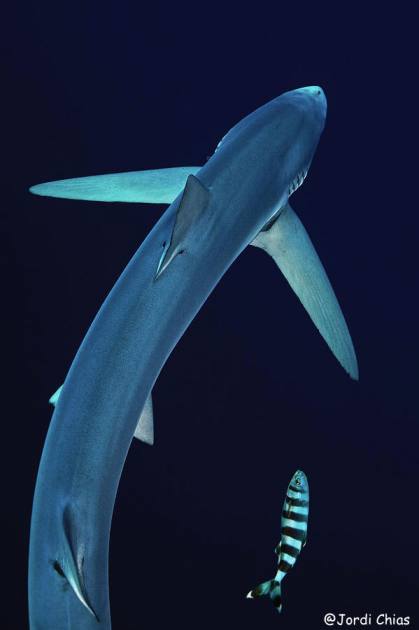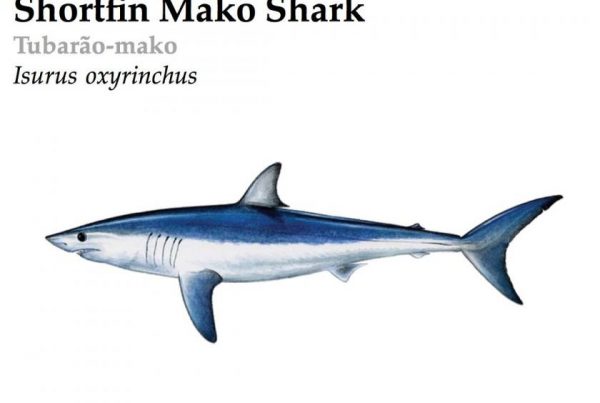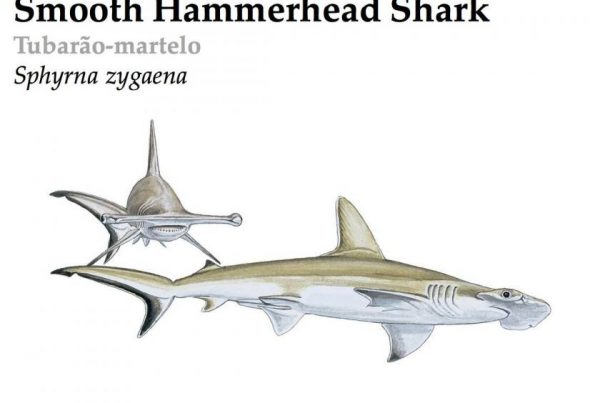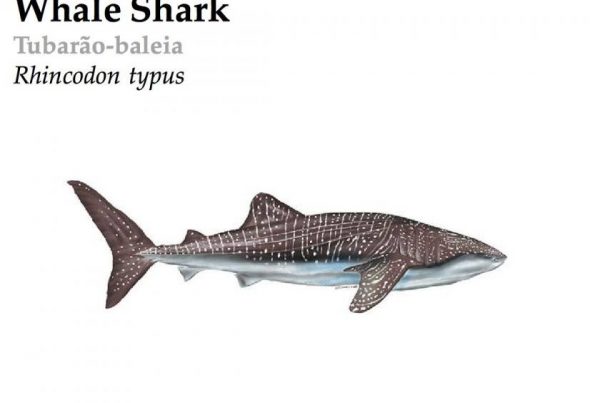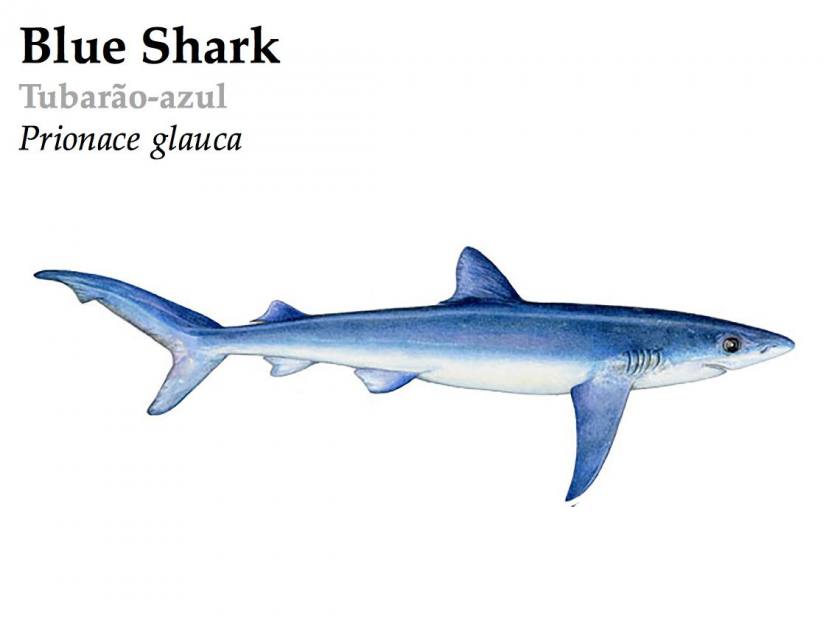
Blue Sharks are named like this because of their deep blue coloration. They are the most abundant pelagic shark species in the Atlantic and are found all year around in the Azores.
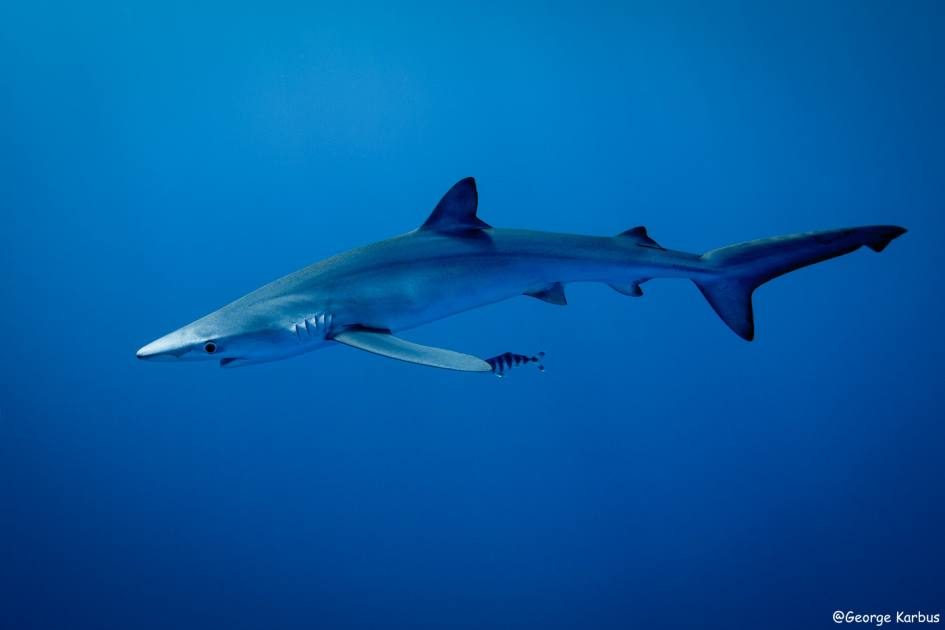
CHARACTERISTICS
Latin name: Prionace glauca
Order: Carchadrichthyes
Family: Cacharhinidae
Length: up to 3.3 m (female), up to 2,8 m (male)
Weight: up to 180 kg (female), up to 55 kg (male)
IUCN Status: Near threatened
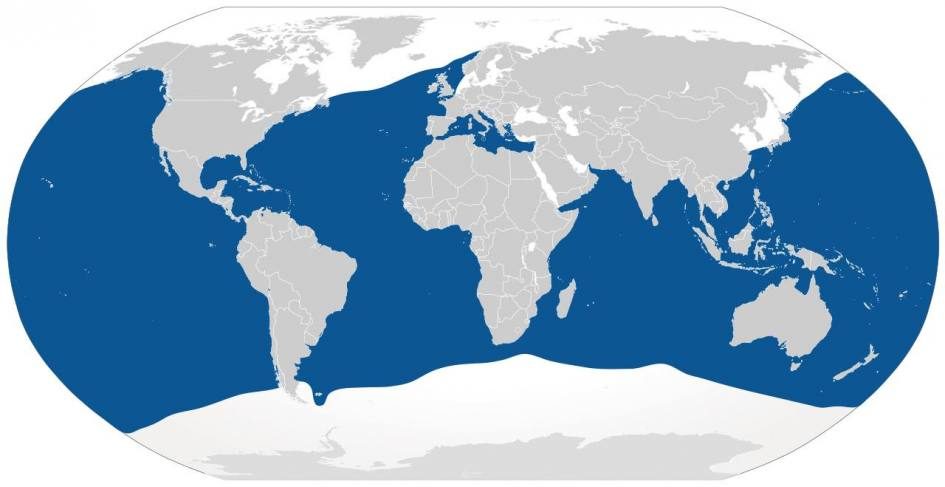
DESCRIPTION
- Color: Deep blue, lighter on the sides, underside white
- Head: Very pointed snout, fusiform
- Dentition: 14 teeth on each side of the upper jaw, 13-15 teeth on each side of the lower jaw
- Gills: 5 to 7 pairs
- Caudal Fin: Heterocercal
HABITAT
Blue Sharks are encountered solitary in the open ocean, along coastal areas and around seamounts. They spend more of their time in depths of 80 to 220 meters.
DIET
Blue Sharks feed on fish (e.g., herring, silver hake, white hake, red hake, cod, pollock, mackerel, tuna), squid, deep water octopus, and, occasionally, seals. They are also opportunistic feeder and have been documented to feed on dead whales and porpoises. Blues Sharks make seasonal trans-atlantic crossing in search of food.
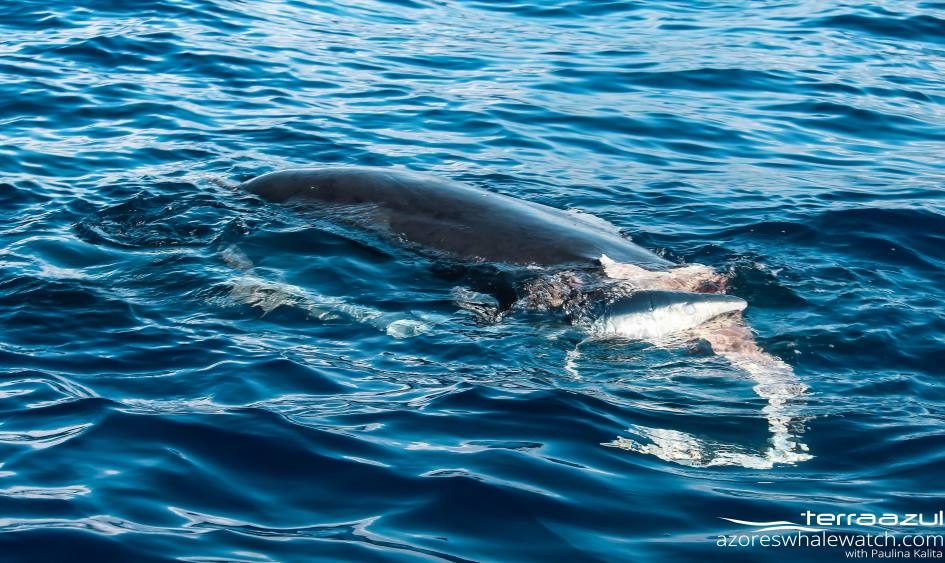
Blue shark feeding off dead beaked whale (Mesoplodon spp.) in the water of Vila Franca do Campo, São Miguel Island, Azores.
REPRODUCTION
Blue Sharks reach sexual maturity at around 4-5 years and they are viviparous with a yon-sac placenta. They can give birth to up 130 young that usually measure about 30 cm in length. The gestation period is about 10-12 months.
